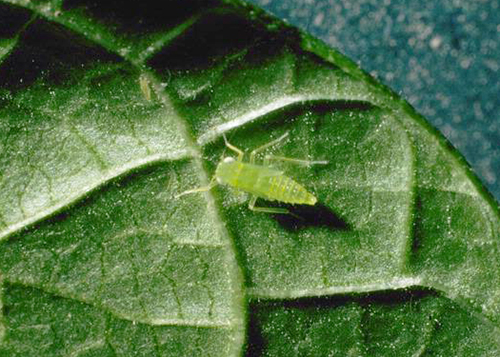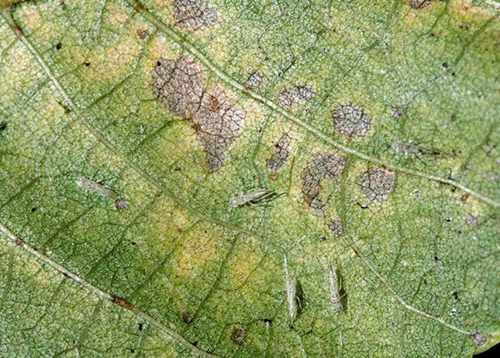Integrated Pest Management
Leafhoppers
Draeculacephala spp.; Deltocephalus spp.
Pest Description
- adults: 1/8 – 1/4 inch long; vary in color from whitish green, brown gray, to yellow; wings held tentlike over the back; one to two rows of spines on hind legs
- nymphs: smaller than adults, typically lime green in color; wings absent but wing buds present
- leafhoppers fly low over turf areas when disturbed by human or mechanical traffic
Host Plants, Diet & Damage
- feed on turfgrasses
- feed on sap from leaf cells
- white to yellow stippling/flecking on leaves
- hopper burn: yellowing/bleaching dieback of turf
- rarely cause manageable damage
Biology, Life Cycle & Damaging Life Stage
- overwinter as eggs inserted into plant tissue or as adults
- eggs hatch in spring and nymphs begin feeding
- overlapping life stages present during summer
- two or more generations per year
- nymphs and adults are the damaging stages
IPM Recommendations
- Maintain healthy plants with proper cultural practices.
- Management or pesticide applications are not typically needed for leafhoppers in turfgrass even though leafhoppers may be noticeable.




